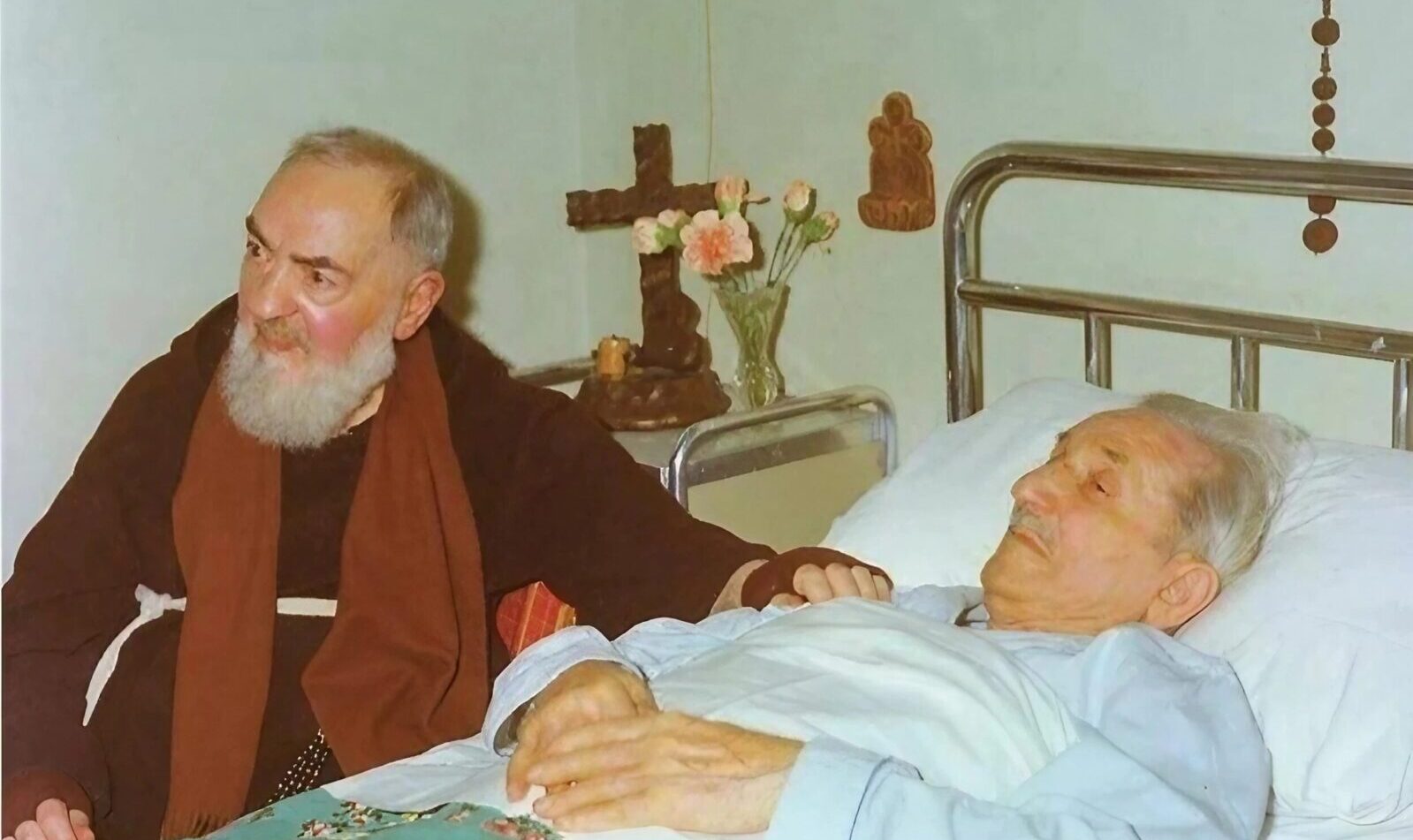Padre Pio, Also known as San Pio of Pietrelcina, is one of the most revered saints in Italy and all over the world.
Its popularity is such that, according to a survey conducted by Christian Family, one out of three Italians invokes San Pio when a saint prays. However, despite his extraordinary popularity, the holiness of Padre Pio remains a topic of debate even among Catholics.
The life of Padre Pio
Born in 1887 with the name of Francesco Forgione, Padre Pio entered the seminary at the age of 16.
After becoming a Capuchin friar, he acquired considerable fame as a healer. During his lifetime, he was often viewed with suspicion by the Vatican hierarchies and for a long time he was considered a sort of impostor.
At the time of his death in 1968, Padre Pio was Italy's most popular priest as well as the sole shareholder in the largest hospital in southern Italy of the time: the IRCCS Hospital House for Relief of Suffering
Controversies and accusations against Padre Pio
Despite its popularity, thePadre Pio's life was not without controversy.
Was accused to have had intimate relationships with some of her collaborators and of fraud. In addition, there were suspicions that she had something to do with very controversial businessmen.
Despite these allegations, his supporters maintain that Padre Pio he was always persecuted unfairly.
The stigmata of Padre Pio
According to what he declared on 20 September 1918, Padre Pio received the stigmata, marks on the body that replicate Christ's wounds on the cross.
This event, always according to his narration, took place while he was in prayer after the Holy Mass. Despite his pain, Padre Pio did not immediately reveal his condition to his superiors or fellow convents. It was only after several days that the stigmata were reportedly discovered by others.
Padre Pio described the experience of the stigmata in a letter to Father Benedetto from San Marco in Lamis, in which he told of a bright light and the appearance of Christ. According to Padre Pio, the blood flowed from his heart "like a waterfall".
The stigmata remained on his body for the rest of his life, but they were not visible to most since Padre Pio often wore gloves and bandages to cover them.
After his death the stigmata were completely closed.
There are many doubts born about the figure of Padre Pio's stigmata, as no one was able to examine them, with the exception of Catholic doctors, since they were always too painful during the exams.
Furthermore, there is documentation to fuel the suspicion that they were self-inflicted with caustic substances of a request (at the time secret) for carbolic acid by Padre Pio.
Padre Pio's body at the moment he is shown to the public wearing gloves, in order to cover the fully healed hands.
The miracles of Padre Pio
Stories of miraculous healing directly related to Padre Pio began to spread shortly after his death. Among these, there is that of a man named Antonio, who was miraculously healed from a serious illness in his presence, just before his death.
Another story is about a young man named Franco, who faced a hopeless illness at the age of 15 and he miraculously recovered after praying to Padre Pio.
These two healings allowed to Padre Pio to be recognized as a saint.
Also, many people have told of having felt the presence of Padre Pio in difficult moments of their life. One of them was a man named Carlo, who had lost a son.
According to Charles, Padre Pio appeared to him in a dream and helped him through the pain.
The canonization process
The canonization process of Padre Pio proceeded slowly and only in the 2002 Pope John Paul II, already seriously ill, proclaimed him a saint.
Today, doubts about St. Pio seem to be largely forgotten by Catholic public opinion.
The figure of Padre Pio today
The attitude of Papa Francesco against Padre Pio is still quite ambiguous but generally positive.
Despite belonging to the Jesuits, an order of the Catholic Church generally considered rather "cerebral" and hostile to popular and charismatic phenomena, Papa Francesco he showed a positive attitude towards the cult of Padre Pio.
The incorrupt body of Padre Pio, why doesn't it decompose?
Padre Pio's body has remained intact over the years, and the Catholic belief is that it has remained so thanks to the phenomenon of "incorruptibility", which refers to the ability of some bodies not to undergo normal decomposition despite not being artificially preserved .
This phenomenon, often associated with holiness, has aroused the interest of many, due to its religious relevance.
From a chemical/physical point of view, Padre Pio's body is preserved because it received a chemical treatment to remain preserved after the exhumation, i.e. through the application of
“a highly concentrated solution of formalin in alcohol”.
Gabrielli
In essence it is an embalming procedureand, which was then supplemented with the use of creosote, benzoic acid and turpentine
The body of Padre Pio it is kept in San Giovanni Rotondo, where it continues to attract faithful from all over the world.






